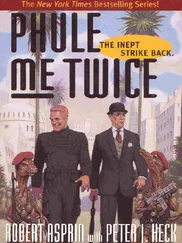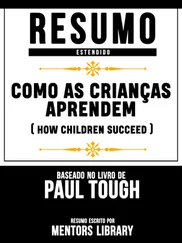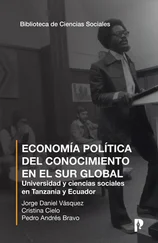The reason that researchers who care about the gap between rich and poor are so excited about executive functions is that these skills are not only highly predictive of success; they are also quite malleable, much more so than other cognitive skills. The prefrontal cortex is more responsive to intervention than other parts of the brain, and it stays flexible well into adolescence and early adulthood. So if we can improve a child’s environment in the specific ways that lead to better executive functioning, we can increase his prospects for success in a particularly efficient way.
It is in early childhood that our brains and bodies are most sensitive to the effects of stress and trauma. But it is in adolescence that the damage that stress inflicts on us can lead to the most serious and long-lasting problems. Partly, that’s just a practical fact of growing up. When you have trouble controlling your impulses in elementary school, the consequences are relatively limited: you might get sent to the principal’s office; you might alienate a friend. But the kind of impulsive decisions you are tempted to make in adolescence—driving drunk, having unprotected sex, dropping out of high school, stealing a wallet—can often have lifelong consequences.
What’s more, researchers have found that there is something uniquely out of balance about the adolescent brain that makes it especially susceptible to bad and impulsive decisions. Laurence Steinberg, a psychologist at Temple University, has analyzed two separate neurological systems that develop in childhood and early adulthood that together have a profound effect on the lives of adolescents. The problem is, these two systems are not well aligned. The first, called the incentive processing system, makes you more sensation seeking, more emotionally reactive, more attentive to social information. (If you’ve ever been a teenager, this may sound familiar.) The second, called the cognitive control system, allows you to regulate all those urges. The reason the teenage years have always been such a perilous time, Steinberg says, is that the incentive processing system reaches its full power in early adolescence while the cognitive control system doesn’t finish maturing until you’re in your twenties. So for a few wild years, we are all madly processing incentives without a corresponding control system to keep our behavior in check. And if you combine that standard-issue whacked-out adolescent neurochemistry with an overloaded HPA axis, you’ve got a particularly toxic brew.
This combination of forces in many of her students was exactly what Elizabeth Dozier felt unable to manage at Fenger High School. After the near riot at the school in October of 2009, she decided there were certain students she simply needed to remove from the school for good. At the top of her list was a sixteen-year-old boy named Thomas Gaston, known to all as Mush. As Dozier saw it, Mush was a ringleader, a high-ranking gang member who was able to spark giant brawls at Fenger with a single glance at one of his lieutenants. “He was hell on wheels,” Dozier told me. “He would step into this building, and it would just go up. He set the school up for a whole lot of nonsense.”
I got to know Mush because he was enrolled, along with two dozen or so other Fenger students, in an intensive mentoring program paid for by the Chicago public schools and run by a nonprofit organization called Youth Advocate Programs, or YAP. In the fall of 2010 and the winter and spring of 2011, I spent a lot of time in Roseland with various YAP advocates and the students they were mentoring, including Mush. My main guide was Steve Gates, the deputy director of YAP in Chicago, a laid-back, burly guy in his late thirties with short, tight dreadlocks; a loose beard; and watery, pale blue eyes. Like Mush, Gates lived in Roseland, just a few blocks from Fenger; he had grown up there, in fact, in similar circumstances and had made a lot of the same mistakes that Mush was making now, twenty years later: running with a gang, carrying a gun, risking his life and his future every day. Gates’s delinquent past gave him a unique understanding of the pressures Mush faced as well as a heightened feeling of urgency as he tried to steer Mush and other Roseland teenagers enrolled in YAP toward a better future.
YAP had come to Chicago at the invitation of Ron Huberman, who replaced Arne Duncan as the CEO of the Chicago school system in 2009. When Mayor Daley named Huberman to the post, Daley was concerned about the rising rate of gun violence among young people in the city, and he gave Huberman an unusual mission for a schools chief: Keep our students from killing one another. Huberman was a firm believer in data; his first job out of college had been with Chicago’s police department, where he was trained in the gospel of CompStat, the high-tech data-analysis system that has been credited with leading to the steep drop in crime in New York City in the 1990s. His first step as schools CEO was to hire a team of consultants to do a CompStat-like analysis on homicide and shootings among students in Chicago. The consultants created a statistical model that, they said, enabled them to identify the students in the city who were most likely to become victims of gun violence over the course of the next two years. They found twelve hundred students in Chicago high schools who, according to their model, had at least a one-in-thirteen chance of being shot before the summer of 2011; within that group of twelve hundred, two hundred “ultra-high-risk” students were identified, each of whom had at least a one-in-five chance of being a victim of gun violence over the next two years. Those were the students who were handed over to YAP and assigned an advocate for as many as twenty hours a week of mentoring and support.
Mush was on that list, which meant that in the fall of 2009, Steve Gates went looking for him to get him enrolled in YAP and assigned to an advocate. At the same time, though, Elizabeth Dozier was trying to kick Mush out of Fenger. Soon after he signed up with YAP, she managed to remove him from her school, at least temporarily, exiling him for a semester to Vivian E. Summers Alternative High School, a small, grim, prisonlike facility eight blocks away from Fenger. Though Mush didn’t like Vivian Summers much, that winter and spring he seemed to thrive under the watchful eyes of the mentors at YAP. Mush’s first advocate got him a job in a local auto-body shop, where he was able to develop his artistic side working on paint jobs, and for a while it seemed like Mush had turned his back on his troublemaking past and was starting to move toward a more productive life.
Then, one night in June of 2010, Mush’s advocate dropped him off at home late and assumed he was in for the night. But Mush decided to slip back out to the streets. A few hours later he was in the Cook County jail along with his friend Bookie, both of them charged with aggravated vehicular hijacking, meaning carjacking with a gun. He and Bookie were each looking at a potential sentence of twenty-one years, but YAP’s attorney somehow persuaded the judge to give them eight months in boot camp instead. Boot camp was a tough ride for Mush—a military-style regimen, pushups and ten-mile runs at dawn—but he drew on some inner discipline that he had seemed to lack at Fenger, and he made it through his sentence.
When I first started spending time with YAP advocates and their students, Mush was still locked up, and well before I encountered him in the flesh, I heard a lot about him—from Gates, from Dozier, from his friends in YAP, even from his mom, whom Gates and I dropped in to see one night while Mush was in boot camp. Dozier spoke about Mush with awe, as if he were some kind of delinquent Svengali. Gates told me that grown men were scared to death of him. His mom, of course, was less impressed with his gangland reputation; she took great pleasure in telling me that she used to buy him boxers with Arthur, the cartoon aardvark, printed on them, to embarrass her boy into keeping his pants pulled up. Still, when the time came for me to meet him, I was a little nervous; it felt like meeting a celebrity. In person, though, Mush looked like an average South Side teenager, but smaller—not much more than five feet tall, and skinny even after eight months of pushups—and he walked with a stiff-jointed, splayfooted, almost Chaplinesque shuffle. He wore a string of rosary beads around his neck, a Yankees cap pulled low on his forehead, and an oversize jacket that could have easily held two or three Mushes.
Читать дальше



![Коринн МакКей - How to Succeed as a Freelance Translator [calibre 3.46.0]](/books/402693/korinn-makkej-how-to-succeed-as-a-freelance-transl-thumb.webp)








